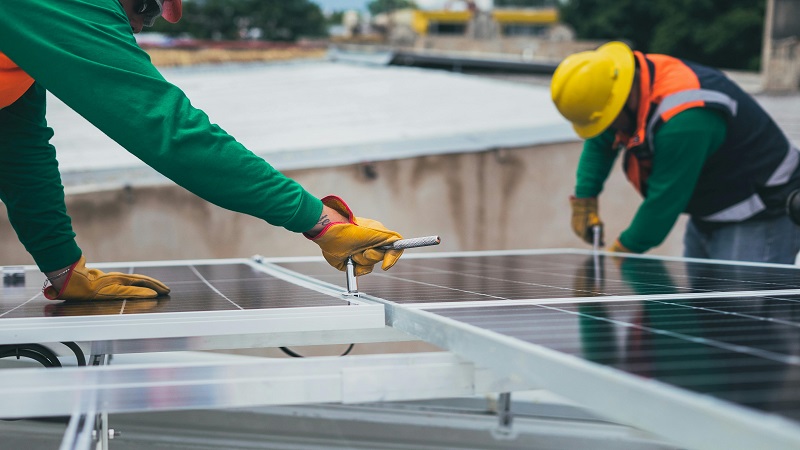Climate change continues to cause significant changes in global temperatures and weather patterns over time.
In fact, the rate of global warming is more than three times as fast per decade since 1982.
While climate change is a natural phenomenon, this rapid shift is primarily due to the increase in man-made greenhouse gases, such as carbon dioxide and methane, in the Earth’s atmosphere.
This article aims to understand the causes and effects of climate change and develop strategies to mitigate its impacts and adapt to its consequences.
Main Causes of Climate Change
Both the earth’s natural processes and human activities play a crucial role in today’s worsening climate change.
Many natural processes have historically affected the planet, including volcanic eruptions, ocean currents, and changes in the Earth’s orbit around the Sun.
But human activities play a major part in this as well.
Burning fossil fuels for energy releases large amounts of carbon dioxide (CO2), accounting for 75% of global greenhouse gas emissions. CO2 traps heat in the Earth’s atmosphere, leading to global warming.
Meanwhile, deforestation destroys the globe’s natural foliage, absorbing CO2 back into the atmosphere and contributing to the earth’s warming.
Since we contribute a huge chunk of the pie to climate change, it’s also up to us to help slow the rate of global warming and reduce its impacts

Empowering Solutions for a Greener Future
While climate change is a daunting challenge, it also presents opportunities for innovation and the development of green solutions. These solutions span a wide range of sectors and approaches, from renewable energy to sustainable practices and technological innovations.
Tapping Into Renewable Energy
Many governments, corporations, and households worldwide have been benefiting from renewable energy sources, including:
Solar Power
Solar power harnesses the sun’s energy to generate electricity. With advancements in solar panel efficiency and battery storage technology, solar power is becoming an increasingly viable solution for both grid-scale and off-grid power generation.
Wind Power
Wind power uses the wind’s kinetic energy to generate electricity. Wind turbines can be installed on land or offshore, providing a versatile and scalable solution for renewable energy generation.
Hydroelectric Power
Hydroelectric power generates electricity from the flow of water. While large-scale hydroelectric dams have significant environmental impacts, smaller-scale run-of-the-river systems can provide a more sustainable solution.
Leveraging these renewable energy sources is an excellent long-term solution towards a more sustainable planet.
Adopting Sustainable Practices
Eco-friendly practices help reduce the environmental impact of human activities. With these sustainable efforts, everyone can make a significant environmental impact — from corporations and communities to individuals.
Sustainable Agriculture
Sustainable agriculture practices, like agroforestry and integrated pest management, can help lessen our carbon footprint when it comes to food production. When done correctly, these efforts help improve soil health, reduce water usage, and decrease greenhouse gas emissions.
Beekeeping
Bees are crucial pollinators for many plants, including crops that are important for human food supply.
By maintaining beehives, beekeepers facilitate the pollination of nearby plants, promoting biodiversity and supporting ecosystems.
Be sure to get your honey bees from trusted suppliers to get started.
Aside from providing opportunities for sustainable livelihoods, beekeepers can sustainably harvest honey from bees and beeswax and use them in various products. Doing so reduces the demand for synthetic alternatives and supports eco-friendly practices.
Waste Reduction
Waste reduction strategies, such as recycling and composting, lower the amount of waste that ends up in landfills.
Furthermore, a shift towards a circular economy, where waste is minimized and resources are reused, can further reduce environmental impact.
Sustainable Transportation
Electric vehicles and public transit significantly lessen the carbon footprint of transportation. Governments can also develop urban planning strategies that promote walkability and cycling to further reduce our reliance on fossil fuels.
By adopting these small changes, everyone can make a big difference in ensuring the planet stays healthy.

Saving the Planet Together
Every one of us, from world leaders to CEOs to families, has a responsibility to help save the environment.
With the ongoing global environmental crisis, it’s high time we take part in reducing our carbon footprint through various sustainable practices. Governments and businesses should also go hand-in-hand in maintaining and restoring our environment and adopting green solutions to their daily operations. It takes a collective effort to truly make a difference for the earth.
